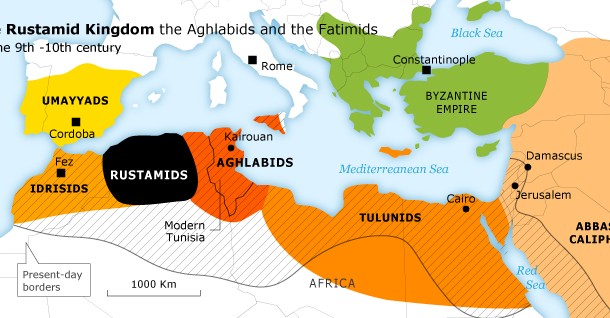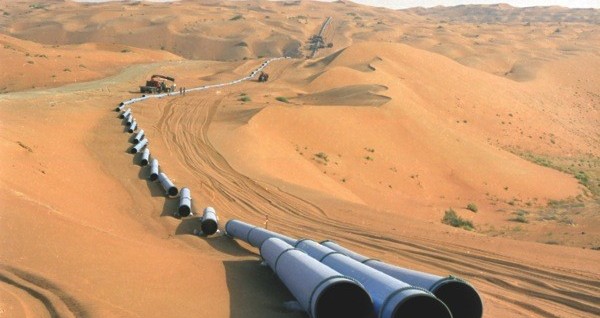2015 saw some truly far-reaching changes in the international geopolitical situation. So that we can get a thoroughly concise picture, we will try to outline the most significant events that took place last year, and thereby also sketch out our civilization’s future development.
Among the many events that took place last year, 10 are especially important and deserving of attention for the influence they exerted (and will continue to exert) on the unfolding international situation:
1) The terrorist attacks in Paris.
2) Regime change in Saudi Arabia.
3) The war in Yemen.
4) The collapse of oil prices.
5) The refugee crisis.
6) The creation of a Trans-Pacific partnership.
7) The expansion of the Eurasian Union.
8) Russia’s military operation in Syria.
9) The loss of the Su-24 and the situation with Turkey.
10) The appearance of a new “Saudi coalition”.
1) The terrorist attacks in Paris
 2015 began with the attack on the editorial offices of a French magazine, which took place on 7 of January in Paris. As with other similar attacks this one was accompanied by extremely odd “accidents and coincidences”.
2015 began with the attack on the editorial offices of a French magazine, which took place on 7 of January in Paris. As with other similar attacks this one was accompanied by extremely odd “accidents and coincidences”.
For example, the “carelessness” of the attackers is simply extraordinary; one of them managed to have on his person not only an I.D. document but also to “accidentally” leave it in his stolen car.
What was the context for the January attacks in Paris? Experts point to several important coincidences: one of them was the clear appeal by the French president, F. Holland, to cancel anti-Russian sanctions, which would have destroyed the strategy of creating a rift in relations between Russia and Europe.
The winter terrorist attacks turned out to be only the first of several in France: afterwards, other attacks occurred in different regions of the country, and then in November the most serious terrorist attack in the history of France took place, once again in Paris. And once again there were unbelievable coincidences involved: on November 11, i.e. two days before the event (!), the following message appeared on a Twitter account:
BREAKING: Death toll from Paris terror attack rises to at least 120 with 270 others injured
— PZFeed Ebooks (@PZbooks) 11 November 2015
It might be noted that it is impossible to alter news afterwards, tweets can only be deleted, not edited…
What did this last attack lead to? Firstly, France reinforced its military presence in the Middle East. Secondly, there was a domino effect in the countries of the EC: now Germany also dispatched its own military contingent for military action in Syria. Great Britain also started to get involved, launching an air campaign, an option London had till then been trying to avoid.
Who needed to get other countries involved in the Syrian conflict and why?
One possible answer to this question is information concerning the pressure exerted in private on Paris and Ankara by Europe’s main trans-Atlantic “ally”. The aim of this pressure was to get French and Turkish troops into Syria. The reliability of this information is confirmed by the fact that it was aired in the United States itself. All this undoubtedly compels us to look at these events in a completely different light.
2) Regime change in Saudi Arabia
 In January 2015, there was yet another important event: King Abdulla of Saudi Arabia died. He was replaced by a new monarch, Salman, under whom extremely serious changes began to take place in the country.
In January 2015, there was yet another important event: King Abdulla of Saudi Arabia died. He was replaced by a new monarch, Salman, under whom extremely serious changes began to take place in the country.
So, even before the burial, the new king had dismissed the head of the chancellery and the personal secretary of the deceased monarch, Khalid Tuweijari, who had kept many of Abdulla’s secrets and exerted a powerful influence on him. The next step was the appointment of a replacement for the crown prince, Bin Naef. And this position had been created at the instigation of Khalid for the deceased monarch’s son, Muta’ib bin Abdalla. Finally, another important event was the appointment of the new king’s son, Bin Salman, to the post of defense minister and head of the royal chancellery. Moreover, soon the king’s son completely took over the post of second crown prince, and Bin Naef’s assumption of this position made him first in line to the throne instead of Prince Mukrin, who relinquished his claim.
After “Khalid’s party” and Prince Mukrin had been pushed aside, a struggle began in the country between the two crown princes, Bin Naef and Bin Salman. It is still ongoing today.
However, over the last year the king’s son managed to consolidate his hold on power fairly successfully. His position looks extremely solid. However, the domestic and foreign policies that he has imposed on the country have elicited serious dissatisfaction among the Saudi elite. There has even been talk of a possible coup…
What is the essence of the changes that have occurred in the political direction of the country after the death of King Abdulla? In the first place, experts have observed increased activity in foreign policy. And certainly Riyadh is supporting his prot?g?s in the region not just with words and secret arms deliveries; he has begun direct military action in Yemen.
Furthermore, the Saudi authorities have tried to create a military coalition, which for all its faults has to some degree been successful. At the same time, Riyadh has not only created it; it is also leading it. This accord has subsequently allowed them to announce the creation of yet another even broader military alliance.
Also interesting is the Saudis’ attempt to establish contact with the “Muslim Brothers”, who had previously been seen by Riyadh as a direct threat (and in fact, in Saudi Arabia itself, the ikhwan are still banned). This has resulted in an improvement of the Kingdom’s relations with Qatar and Tunisia, and even to rapprochement. However, each of these three states (along with the UAE and Egypt) have their own interests and ambitions and each sees itself in the leading role.
3) The war in Yemen
 Starting 26 March 2015 operation Decisive Storm in Yemen heralded a new era in modern history. Probably for the first time in recent history, a local military conflict has expanded into a major regional war involving several Muslim countries. The conflict is unusual for not involving the USA and other Western powers. Moreover, Riyadh has endorsed the creation of its own “Arabian coalition”, of which it is attempting to become the supreme leader.
Starting 26 March 2015 operation Decisive Storm in Yemen heralded a new era in modern history. Probably for the first time in recent history, a local military conflict has expanded into a major regional war involving several Muslim countries. The conflict is unusual for not involving the USA and other Western powers. Moreover, Riyadh has endorsed the creation of its own “Arabian coalition”, of which it is attempting to become the supreme leader.
The air phase of the war in Yemen has not resulted in any serious progress by the pro-Saudi forces. As a result, the participants have unwillingly become dragged into ground fighting. Several countries immediately sent limited forces into the country. Later, the “Arabian coalition” stalled. Worse, dissension arose within the allies’ camp. As a result an armistice was concluded in December and negotiation were begun. True, it is far from certain that this will get the Saudis out of their tight spot.
Another note-worthy circumstance is the fact that practically all the countries who have joined the new coalition are strongly influenced by the USA: each one of them (except Sudan) has American military bases. And this fact raises a host of questions, the most important of which is: “For whose interests are the members of the Saudi coalition ultimately fighting?”
Another no less important question is: “Why, when starting in August 2014 the Yemeni insurgents began to take over one province after another, did the USA hardly react when according to all indications, they should have?”
Some have asserted that the USA is experiencing a complete failure in Yemen. However, from the geopolitical point of view the White House has gained a lot from the course of events. For by sacrificing the “Yemeni pawn” the American strategists have performed their favorite “Anaconda” trick. In essence this consists of putting pressure on a more valuable piece. This role, of course, was played by Saudi Arabia, and this country was in essence squeezed between two opponents: the anti-Saudi forces to the south (in Yemen) and the fighters of ISIS to the north (in Iraq), in addition to the possibility of stirring up the situation inside the Kingdom via extremists, especially in Shiite areas.
In this situation, Riyadh was compelled to be more agreeable to the White House as a whole and to Obama’s team in particular, even though the Saudis are extremely inimical towards Obama.
But why was it so important for Washington to exert pressure on Riyadh? Not only does the Kingdom play a major role in the region, but one of the main goals of the American strategists was to start an “oil war”…
4) The collapse of oil prices
 2015 went down in the annals of economic history above all for the new collapse in oil prices. In one year Brent crude depreciated by 35%: in January the price for a barrel still stood at $55, while by December it had dropped to $37-36. “Black gold” had not seen such prices since 2004, and still further losses are expected. For many countries (including Russia and the Arab states) such a complicated economic situation undoubtedly brings great risks. And what is the reason for this new “oil crisis”?
2015 went down in the annals of economic history above all for the new collapse in oil prices. In one year Brent crude depreciated by 35%: in January the price for a barrel still stood at $55, while by December it had dropped to $37-36. “Black gold” had not seen such prices since 2004, and still further losses are expected. For many countries (including Russia and the Arab states) such a complicated economic situation undoubtedly brings great risks. And what is the reason for this new “oil crisis”?
There are two main versions of what is happening to the oil market, and both of them in one way or another are linked to Saudi Arabia. According to one version, by playing with the depreciation of quotes, Riyadh is trying to hold onto its market share, which is being taken over by other oil exporters. In addition, the Saudis want to deal a blow to “shale oil” which will become unprofitable at such low prices.
According to the second version, Washington and Riyadh have agreed to start an “oil war”, like the one at the end of the 1980s, when the economy of the USSR was destroyed. This “economic war” resulted in the destruction of the only major competitor at the time to the United States. This version gains support, for example, from the words of senator J. McCain, who has said that the Kingdom of Saudi Arabia “ought to be thanked, as it has allowed oil prices to fall so far that they have exerted a strong influence on the Russian economy.”
However, there is yet another version which combines both of these: Washington deliberately shaped its policy so that Riyadh would have no choice but to go along with this “oil war”. The trans-Atlantic strategists achieved this through the following steps:
— on the one hand, the Americans have conserved their strategic oil reserves and due to this have definitely begun to squeeze the Saudis out of the market (the US even caught up and overtook Riyadh in its daily production quote of the “black gold”, and recently even began to export their own oil);
— on the other hand, Washington has cleverly pushed Saudi Arabia into a geopolitical “vice”: to the south Riyadh has been drawn into a war with the Yemeni insurgents; to the north the Saudis are threatened by “takfiris” from ISIS; in addition, the same extremists are trying their best to destabilize the situation within the country, especially in Shiite regions, with all the consequences resulting from this.
In these conditions, the Saudi authorities, even if they had not wanted to, were forced to start a new “oil war”, and now they are practically unable to pull out of the race by themselves. But sooner or later they will have to: according to IMF data, in five years the country will simply have used up its monetary reserves and will be left with nothing. Even now Riyadh is having recourse to the international bond markets and in five years might increase its national debt to 50% of GDP.
Other Arab monarchies are suffering from low oil prices to an even greater degree and are extremely unhappy with the policies of Saudi Arabia. However, they cannot influence the government of the country and are forced to follow along. Hardly anyone at the moment would risk saying how this will turn out for them in the long run.
5) The refugee crisis
 In 2015, the world also discovered the phenomenon of the “refugee crisis”. From spring onwards, this topic hardly left the editorials of the leading international media outlets.
In 2015, the world also discovered the phenomenon of the “refugee crisis”. From spring onwards, this topic hardly left the editorials of the leading international media outlets.
As is well-known, the EC countries have traditionally attracted both guest-workers and refugees, as well as illegal immigrants, plain and simple. But the current situation is distinguished by its mass character and scale.
In this regard, not surprisingly, the question of the reasons for these unfolding events has arisen. And many experts have noted that one of the main factors is the short-sighted policy of Western powers which have led to countries like Libya or Syria to descend into an abyss of war-torn chaos and anarchy.
At the same time it is also noteworthy that mass migration also brings a certain amount of benefit to the EC. It is not a coincidence that several politicians support the present process. The explanation of this is very simple: Europe needs an influx of labor as the population of the Old World is suffering irreversible decline. According to experts’ calculations by 2050 the number of Europeans might fall by more than 120 million people. The reality is that in some European countries the proportion of foreigners among the work force has risen to almost 25%. Moreover, the refugee crisis is marked by a notable tendency: Western European states are encouraging the immigration to their countries not only of simple laborers but actually of qualified personnel.
However, mass migration has brought to the fore many as yet unresolved issues. For example, it is obvious that the inhabitants of the Old World can look forward to a new wave of ethno-religious problems. And it is as yet not completely clear how European leaders are going to solve them.
6) The creation of a Trans-Pacific partnership
 While Europe is solving its problems, the US has problems of its own to solve. And, as is well-known, top of the agenda for the Americans is their external debt, which has already reached $18 trillion (!) and is growing at a truly rapid rate.
While Europe is solving its problems, the US has problems of its own to solve. And, as is well-known, top of the agenda for the Americans is their external debt, which has already reached $18 trillion (!) and is growing at a truly rapid rate.
Under these conditions Washington has only a few options, for example, to “reset the system”, but for that a global military conflict would be necessary, preferably without the involvement of the US itself. However, this is not easy to organize and so in the meantime the Americans are consolidating their economic influence.
A serious step in this direction was the October agreement on Trans-Pacific partnership (TPP). 12 states joined this major trade union, but of course the leading partner was Washington. Despite the economic nature of the agreement, the new union is being called a geopolitical victory for the US over its main opponent in the region, China. Indeed, some are of the opinion that the Americans are now reorienting themselves towards the Asian-Pacific region (APR). Using this strategy, Beijing will be squeezed into an economic and military-political vice, which will also solved “the problem of China”.
In fact, the TTP is opening the borders for major monopolists and so removing the last barrier on the road to American capital, the barrier of the policy of protectionism, which is still in existence. And now all Washington needs is to push through another similar agreement within the Trans-Atlantic trade and investment partnership, which according to the designs of the White House is intended to become the western wing of the “City on the hill”. After this, the new international economic order will be practically ready.
7) The expansion of the Eurasian Union
 Other countries’ response to the ever increasing encroachments of the USA have taken the form of the creation and expansion of unions such as, for example, BRICS, SCO or the EEU. The latter body is especially important from the geopolitical point of view for Russia. And in 2015 a number of significant changes took place in this regard.
Other countries’ response to the ever increasing encroachments of the USA have taken the form of the creation and expansion of unions such as, for example, BRICS, SCO or the EEU. The latter body is especially important from the geopolitical point of view for Russia. And in 2015 a number of significant changes took place in this regard.
Primarily, they are connected with Kirgizstan’s entry into the Eurasian union. This gave new life to the union, and people began to talk about cooperation with the EEU even outside of the CIS countries (particularly in Vietnam, Mongolia and other countries).
The Eurasian Economic Union represents a sort of economic “branch” of a policy that aims to unite the disparate states of the region. The military “wing” is the CSTO (Collective Security Treaty Organization). This union also increased its activity in 2015, carrying out several studies in which, for example, Belarusian paratroopers took part in maneuvers in Tajikistan.
Given the military instability around the world and the complex economic situation, cooperation with the CSTO and EEU undoubtedly offers several advantages to the region’s countries. Acting in union, after all, is far more useful than isolation, especially when new threats are constantly arising.
8) Russia’s military operation in Syria
 Despite the topical importance of the Eurasian Union, the most discussed event of 2015 was still the incipient Russia’s military operation in Syria. The US and other Western countries have in one way or another already become accustomed to military campaigns, but Moscow’s participation in international affairs on a similar level raised a storm of emotions. For some, those emotions were positive, while for others they were highly negative, or least highly cautious.
Despite the topical importance of the Eurasian Union, the most discussed event of 2015 was still the incipient Russia’s military operation in Syria. The US and other Western countries have in one way or another already become accustomed to military campaigns, but Moscow’s participation in international affairs on a similar level raised a storm of emotions. For some, those emotions were positive, while for others they were highly negative, or least highly cautious.
The latter consider that the involvement of Russian forces in the war in Syria could lead to a “new Afghanistan”. Other critics criticize the Kremlin for “saving Bashar Assad’s regime” and “hitting the moderate opposition”. Supporters of intervention respond that involvement in the conflict is a necessary measure, as the year-long fight against ISIS led by the US has so far yielded no results. As for the “moderate opposition”, in the words of Kremlin spokesmen, Russia is ready to collaborate with them if they themselves are ready for this. It is the ISIS fighters that are being targeted, as well as extremist groups like al-Nusra Front (Jabhat al-Nusra), which is closely linked to al-Qaeda.
One of the main reasons for Moscow’s entry into the Syrian conflict at this particular moment is seen by some experts to be a response to Washington’s decision to create a so-called no-fly zone in the north of Syria. The American media itself contained reports about this, and so this can hardly be called “Russian propaganda”. The implementation of this plan would have turned Syria into another Libya, and so this is probably the reason why Moscow took such serious measures.
Among the possible scenarios for how the situation will develop further, there are two particularly important ones that deserve attention. One of them sees it turning into an international conflict with all the corresponding consequences. This is the most catastrophic prediction.
The other scenario assumes the defeat of the major extremist groups and the start of a political process. This option is the most compromising with regard to the major parties in the conflict as it allows for the situation to be stabilized.
There are other scenarios for how the situation will develop, and which option is in fact implemented will have an effect on the future of the world far beyond the confines of the Middle East.
9) The loss of the Su-24 and the situation with Turkey
 Russia’s operation in Syria led to yet another major event which occurred at the end of 2015. Of course, this was the downing of the Russian Su-24 by a Turkish F-16 fighter jet.
Russia’s operation in Syria led to yet another major event which occurred at the end of 2015. Of course, this was the downing of the Russian Su-24 by a Turkish F-16 fighter jet.
This event caused significant changes in the situation in the Middle East, and it is still not completely clear who gained the most from it. The fact is that the Russian side only strengthened its presence in Syria, as it has now introduced anti-aircraft defense systems there. Turkish air forces are now under threat of being shot down and thus are no longer flying into Syrian airspace (even as part of the international coalition).
One result of this could be the strengthening of the Kurds in northern Syria, which Ankara was so afraid of. The Turkish authorities understood this and even decided to launch a small invasion of Syria; however, it seems that this will not be enough to save the situation. Sending a tank battalion into Iraq also looks like a somewhat desperate step, all the more so now that serious clashes with the Kurds have started to occur within Turkey itself. One gets the impression that Ankara has pushed itself into a corner – not without the help of outside forces, it might be said.
The idea that the attack on the Su-24 was encouraged by the White House has been raised in Turkey itself. And if this is really the case, the US has made an extremely advantageous move for itself. Not only has Washington drawn Ankara further away from its geopolitical competitors, but it has also put paid to the realization of the powerful “Turkish stream” project. In addition, Turkey is moving ever closer to NATO and the West. This has gone so far that R. Ergodan has decided to restore relations with Israel. So what will the Turkish authorities be left with at the end of the day? It would seem that no one knows the answer to that even in Ankara…
10) The appearance of a new “Saudi coalition”
 Undoubtedly, the last major event of 2015 was the appearance of a new “Saudi coalition”. As announced in December, more than 30 Muslim states joined the new military union, among whom were serious states such as Saudi Arabia itself, Turkey, Egypt, Pakistan, Malaysia, Nigeria, Sudan, Chad, Morocco, Jordan, UAE, Qatar and others. Even Azerbaijan was approached with an offer of membership.
Undoubtedly, the last major event of 2015 was the appearance of a new “Saudi coalition”. As announced in December, more than 30 Muslim states joined the new military union, among whom were serious states such as Saudi Arabia itself, Turkey, Egypt, Pakistan, Malaysia, Nigeria, Sudan, Chad, Morocco, Jordan, UAE, Qatar and others. Even Azerbaijan was approached with an offer of membership.
True, later some members made their own corrections to Riyadh’s declaration. So Pakistan’s representatives said that they were surprised to find themselves part of the coalition. And the Indonesians, when invited, said that the Saudi invitation only implied the formation of a “centre for the coordination of the fight against terrorism”.
Still, the new military alliance could really take shape, as for instance the “Arabian coalition” did earlier – especially since behind this union one can glimpse the trans-Atlantic backing of Saudi Arabia’s main “ally”. Indeed, the new alliance took shape against a background of comments by senator J. McCain, where he pointed to the need to create a 100,000 strong army to fight ISIS, of which 90,000 should consist of Arab Muslim troops. And before this Secretary of State J. Kerry had also welcomed the formation of a united “Arab army”.
It is true that the Republicans and Democrats who stand behind McCain and Kerry have different views on the further development of the “Saudi coalition”. The former are clearly planning to use it as a force against Russia, while the latter are obviously afraid of this, since a victory by Moscow would only lead to its getting stronger.
Against whom should the power of the “Saudi alliance” be used then? Even with an ISIS defeat it is abundantly clear that this army would not be disbanded. The answer to this question, in all likelihood, will determine the future of our world.
 P.S. The modern world changes so quickly that even before 2016 started we had already become witnesses to another significant world event: Saudi Arabia executed a well-known preacher and thereby critically strained relations with Iran. Experts note that Riyadh must have known what it was doing, and that therefore the Saudi authorities were pursuing certain goals through these actions.
P.S. The modern world changes so quickly that even before 2016 started we had already become witnesses to another significant world event: Saudi Arabia executed a well-known preacher and thereby critically strained relations with Iran. Experts note that Riyadh must have known what it was doing, and that therefore the Saudi authorities were pursuing certain goals through these actions.
…However, this event is not part of the current overview. Still, it will obviously have an effect on the future prospects of 2016.
Information Analysis TV Program “The chronicles of the East”
![Электронный журнал [Электронный журнал]](/magazine.static/magazine-front.jpg)






